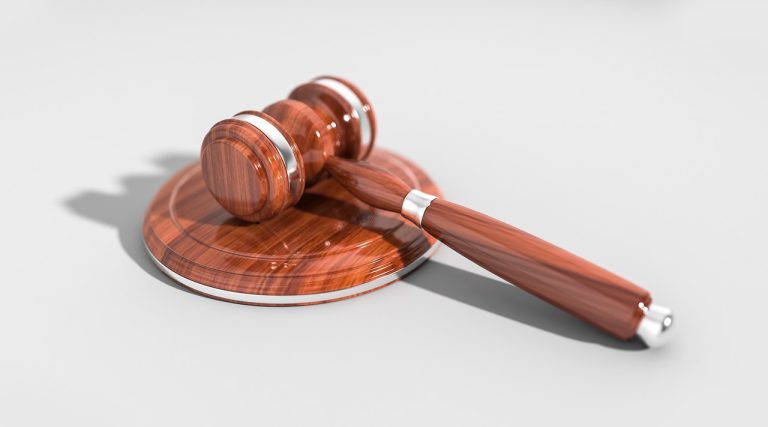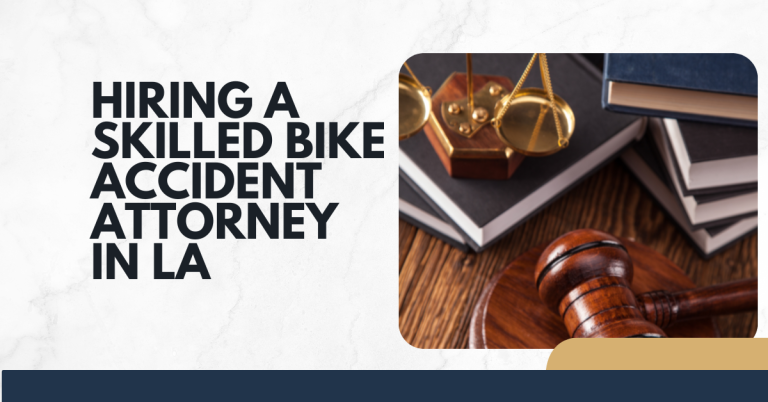Common Mistakes That Can Ruin Your Injury Case
Filing an injury claim can be overwhelming, and even small mistakes can jeopardize your chances of receiving fair compensation. Common errors include missing critical deadlines, failing to gather proper evidence, accepting low settlement offers too quickly, or discussing your case on social media. By understanding these pitfalls and taking proactive steps, you can protect your rights and strengthen your claim. For personalized advice, consulting a trusted legal expert is always recommended.
Table of Contents
- Understanding the Basics of an Injury Claim
- Top Mistakes That Can Derail Your Injury Case
- How to Strengthen Your Case: Proactive Steps to Take
Imagine this: you’ve been injured in an accident that wasn’t your fault. The physical pain is bad enough, but now you’re facing mounting medical bills, lost wages, and the stress of dealing with insurance companies. You know you deserve compensation, but navigating the claims process feels like walking through a maze blindfolded. Unfortunately, many people make seemingly minor mistakes during this process – mistakes that can lead to their claims being denied or undervalued.
For example, one of the most common missteps is waiting too long to seek legal guidance. While it might seem like you have plenty of time to file your claim, statutes of limitations vary by jurisdiction, and delays can severely weaken your case. In fact, consulting a Calgary injury lawyer early on can help clarify deadlines and secure you don’t miss crucial opportunities to secure the compensation you deserve.
The reality is that insurance companies are skilled at finding reasons to reduce or reject payouts. A simple oversight, like failing to document your injuries properly or posting about your recovery on social media, can be all it takes to weaken your case. That’s why understanding the nuances of personal injury claims is so important. Taking the right steps early on can make a world of difference in the outcome of your case.
In the sections below, we’ll explore the most frequent mistakes claimants make and provide actionable tips to help you build a stronger, more successful case. Let’s dive in.
Understanding the Basics of an Injury Claim
Before diving into the mistakes that can derail your case, it’s important to understand the foundation of a personal injury claim. Knowing what qualifies as a valid claim and why timing is critical will help you approach your situation with clarity and confidence.
What Constitutes a Personal Injury Case?
A personal injury case arises when someone suffers harm due to another party’s negligence or intentional actions. This broad category includes scenarios such as car accidents, slip-and-fall incidents, dog bites, medical malpractice, and even defamation. The key element in these cases is proving that the other party had a duty of care toward you, breached that duty, and caused your injuries as a result.
For instance, if a driver runs a red light and hits your car, they breached their duty to follow traffic laws, which directly led to your injuries. Similarly, if a property owner fails to fix a broken staircase and you’re injured as a result, they may be held liable for negligence. Understanding whether your situation meets these criteria is the first step in determining if you have a viable claim.
The Importance of Timely Action
Everything in personal injury case is a matter of timing. Each state or jurisdiction has a statute of limitations which is a legal timeline in which you should make your claim. Putting off this window may very well mean the dismissal of the case with no prospects of remedy irrespective of the strength of your case.
As an example, the statute of limitation on personal injury cases in most jurisdictions is between one and three years with the exceptions being case specific or claimant age. Besides, some time-specific actions such as informing the responsible party about the injury or collecting evidence should be done within a certain period of time in order to keep the claim alive. Taking too long may result in evidence loss, blurred memory of the witnesses, or even loss of important documents.
Being first will also be of great benefit to you when it comes to negotiating with insurance firms. They tend to discount the claims and rush payments so they may even present low ball settlements without you having had a full perspective of the damages. You can take prompt action on your request by tackling it at the initial stages that isolate you and allow you to do the calculations of obtaining the real value of your losses with regards to future medical expenses and lost earnings.
Top Mistakes That Can Derail Your Injury Case
Even the strongest personal injury cases can unravel due to avoidable mistakes. Many claimants, eager to resolve their issues quickly, inadvertently make decisions that weaken their claims. Below, we’ll explore some of the most common pitfalls and explain why they’re so detrimental.
Missing Statute of Limitations Deadlines
One of the most critical – and irreversible – mistakes is failing to file your claim within the statute of limitations. These deadlines exist for a reason, and missing them means your case is dismissed before it even begins.
For instance, imagine you were injured in a car accident but decided to focus on recovery instead of legal action. Months later, when you finally decide to pursue compensation, you discover the filing deadline has passed. This scenario is far more common than you might think, especially for individuals unaware of the specific timelines in their jurisdiction.
To avoid this mistake, research the statute of limitations applicable to your case or consult a legal professional early on. Remember, time is not on your side when it comes to personal injury claims – procrastination can cost you everything.
Failing to Gather Sufficient Evidence
Another frequent error is underestimating the importance of evidence. Without solid documentation, proving liability becomes an uphill battle. Insurance companies thrive on doubt, and if your evidence is weak, they’ll exploit it to reduce or deny your claim.
Key pieces of evidence include:
- Photographs: Take clear pictures of the accident scene, injuries, and any property damage.
- Medical Records: Document every visit to healthcare providers, including diagnoses, treatments, and prognoses.
- Witness Statements: Collect contact information from anyone who saw the incident and ask for their account of what happened.
- Incident Reports: File formal reports with relevant authorities (e.g., police for car accidents or workplace safety boards for on-the-job injuries).
Skipping any of these steps can leave gaps in your case. For example, failing to report a slip-and-fall incident to the property owner immediately after it happens may lead them to dispute your claim later. Thorough documentation secures you have a robust foundation to support your argument.
Posting on Social Media About Your Case
In today’s digital age, many people turn to social media to share updates about their lives – including details about their injuries or frustrations with the claims process. Unfortunately, this habit can backfire spectacularly.
Insurance adjusters routinely monitor claimants’ social media profiles for inconsistencies. Something as innocent as posting a photo of yourself smiling at a family event could be twisted to suggest you’re “fine” and don’t deserve compensation. Even vague posts about feeling “better” can be misinterpreted to downplay the severity of your injuries.
The best course of action? Avoid discussing your case online entirely. Set your profiles to private if necessary, but remember that nothing posted online is truly private. When in doubt, silence is golden.
Accepting the First Settlement Offer
Insurance companies often present initial settlement offers quickly, hoping claimants will accept without fully understanding the value of their case. These offers are typically far lower than what you’re entitled to, especially if long-term damages like ongoing medical care or lost earning capacity are involved.
For example, consider someone who accepts $10,000 shortly after a car accident, only to realize months later that their medical bills exceed $50,000. By then, it’s too late to renegotiate.
Before accepting any offer, carefully evaluate your current and future needs. If possible, consult with a legal expert to secure the settlement reflects the true extent of your losses. Patience and diligence pay off in the long run.
How to Strengthen Your Case: Proactive Steps to Take
While avoiding mistakes is crucial, taking proactive steps can significantly bolster your injury claim. By being diligent and methodical, you can build a strong foundation for your case and increase your chances of securing fair compensation. Below are some practical strategies to help you stay ahead of the curve.
Consulting with Legal Experts Early
Another critical step is seeking legal advice as soon as possible. An experienced lawyer can guide you through the complexities of your case, securing you don’t overlook important details or deadlines.
For example, they can help you calculate the full value of your claim, including future losses that might not be immediately apparent. They’ll also know how to negotiate effectively with insurance companies, who may try to pressure you into accepting less than you deserve.
If you’re unsure where to start, consider reaching out to trusted injury lawyers in Calgary or professionals in your area. Many offer free consultations, allowing you to discuss your situation without obligation. Even if you ultimately decide not to hire them, their insights can provide clarity and direction during a challenging time.
Documenting Everything
One of the most effective ways to strengthen your case is through meticulous documentation. Keeping detailed records secures you have evidence to counter any disputes or challenges from the opposing party.
Start by creating a dedicated file – physical or digital – for all documents related to your injury. This should include:
- Medical Records: Save copies of every doctor’s note, prescription, test result, and therapy session. These prove the extent of your injuries and tie them directly to the incident.
- Expense Receipts: Track all costs associated with your recovery, including medical bills, transportation to appointments, home modifications (if applicable), and even over-the-counter medications.
- Communication Logs: Record every interaction with insurance adjusters, healthcare providers, or witnesses. Note the date, time, and key points discussed in each conversation.
Additionally, maintain a personal journal to document how your injuries impact your daily life. Describe your pain levels, emotional struggles, and any activities you can no longer perform. This narrative can be invaluable when demonstrating non-economic damages like pain and suffering.
Conclusion: Protecting Your Rights and Moving Forward
There is hardly a case when a personal injury claim is not a complicated procedure, yet knowing the pitfalls may come in handy. As we have seen, even minor errors such as meeting deadlines, keeping documentation, or taking lowball settlements will have permanent effects. But on the positive side, being proactive and collecting as much documentation as possible and consulting legal advice early can go miles towards bolstering this.
The most important lesson is the following: knowledge is power. The best way to maximize your chances of receiving the compensation that you are entitled to is to inform yourself about the claims process and prevent some of the most common pitfalls. Insurance companies do not work on your side; they are concerned with reducing claims. This is why it is important to be diligent, patient and strategic when claiming your claim.







